The Ultimate Hvar Island Guide: Where to Stay, Best Things to Do & Travel Tips
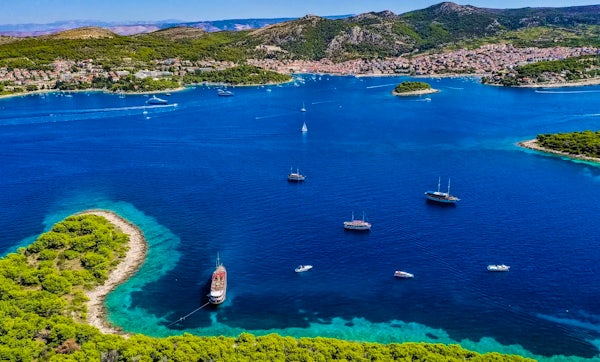
With its chichi cocktail lounges and salt-washed beach bars, Hvar has risen to become one of the most celebrated destinations in Croatia. It's mainly famed for its pumping nightlife scene and rollicking clubs. But visitors can also escape the towns to wander a backcountry laden with swaying pine forests, dressed in vineyards, and dashed with periwinkle blooms of lavender. Oh, and the isle is home to one of the oldest towns in the country, with relics that date back to the 300s, BC!
This ultimate guide to Hvar covers all you need to know about planning your trip, from details on how to get there to the must-see landmarks that await…
Where is Hvar, Exactly?
Hvar strings through the middle of the Dalmatian Islands. To the north is the beach mecca of Brac, to the south the winelands and wooded hills of Korcula. If all that sounds like Hvar is in just about the perfect location for island hopping, then that's because it is! In fact, it's the yachting capital of Croatia, drawing up to 20,000 people on cross-island itineraries every day in the peak season. The nearest major mainland port is Drvenik, but most non-sailing travellers will come in via ferries out of Split (more on those later).
Best Time to Visit Hvar (Weather, Crowds & Prices)
The scent of blooming lavender in the Hvar hills heralds the start of the spring, and, by extension, the main tourist season on the island. It begins around late April, with the hotels and the champagne cocktail bars on Hvar Town marina finally coming to life again after a long winter hibernation. The first few weeks of May see a trickle of visitors drawn by sunny days where temperatures hit around 22-23 degrees. June is when things really start in earnest. We'd say that this is the best time to come to Hvar if you're keen to get stuck into the party scene. Mercury highs are around the 27-28 mark and all the best clubs and beach bars – from Hula Hula to Kiva – are positively pumping. That vibe carries on until the end of August. After that, the autumn months prove a touch better for romantic travellers and those eager to avoid the crowds. There tends to be sunbathing-worthy weather until around halfway through October.
Where to Stay in Hvar
Choosing the right base can make or break your Hvar experience. Hvar Town is party central – waterfront dining, buzzing nightlife, and that iconic harbour where superyachts dock. Perfect if you want to stumble home from bars, but expect to pay €150-400+ per night during peak season.
For authentic Croatian vibes and better value, Stari Grad offers charming stone houses and family-run guesthouses from €60-120 per night. You're still only 20 minutes by bus from Hvar Town's action. Jelsa strikes the middle ground with decent restaurants and prices that won't destroy your budget (€70-180 per night).

The Top 5 Best Things to See and Do in Hvar
Hvar is Croatia's answer to Mykonos and Ibiza. AKA – it's the good-time isle of the Adriatic Sea; a place to let your hair down, glug crisp white wines, people watch on the marina, and party until sunup. But there's also some history and adventure in the mix. Check it out…
Hvar Nightlife: Party, Party, and Party Some More
Hvar has garnered a reputation for being Croatia's most hedonistic summer destination. It's basically one long party from the start of May to the season close at the end of August. What we love is that there's a pretty fun mix of people. Yes, you get the Gucci-clad jet setters, but you also get the youthful backpackers and the experience-hungry yachters (cough_us_cough).
There's no shortage of places to grab a drink and dance the night away, but no first-time visitors should miss Kiva Bar (a wild drinkery that spills into a narrow alleyway) and Hula Hula (a pumping DJ spot right by the beach with some of the most spectacular sunsets around!).
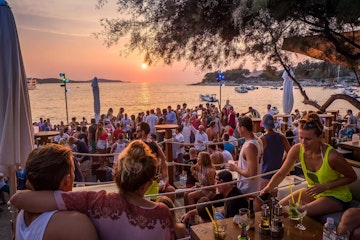
Stari Grad
While the glitzy harbour in Hvar Town gets all the plaudits, Stari Grad is the atmospheric and cultural corner of the island. Set beneath green hills around a natural marina area, it can trace its past back more than 2,300 years, which actually makes it one of the oldest settlements in the country! Today, that long history can be seen at landmarks like the 16th century Tvrdalj castle, and the cobbled routes of Srinjo kola, the ancient trading area of the town. The Riva promenade is also downright lovely for a relaxed drink and a Croatian meal.
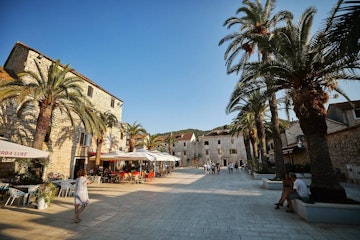
Explore the Backcountry
Loads of people will dock up here and simply hit the bars. That's fun, no doubt about it. But there's also another side to the long, thin isle that's perfect if you're the sort that likes an adventure. Cue the backcountry, which is scarred by medium-high limestone ridges, dotted with twisted olive trees, and planted with blooms of aromatic lavender.
There are a couple of lovely hiking trails to get on if that sounds like your sort of thing – the wooded route from Hvar to Stari Grad is particularly nice, and this is covered on our Croatia Island Explorer Tour. You could also explore on two wheels, because there are beautiful biking paths connecting up sleepy Jelsa on the north shore with the vineyards and pebble coves further west.
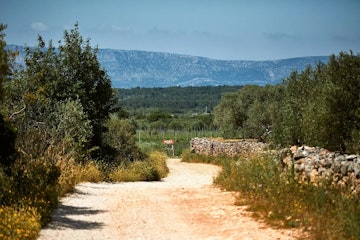
Pakleni Islands
Check the map – The Pakleni Islands are the squiggle of land that pushes into the Adriatic just off from Hvar Town. They're actually something of a playground for the yachters who pass this way in the summer, mainly because they're replete with hidden swimming coves that have water so clear it's almost impossible to tell them apart from the hotel pool!
We think that little Mlini island is the prettiest, with its pine-threaded coves. Be sure to cap off the day at Marinkovac, though, where a rollicking beach club offers fine dining and cocktails.
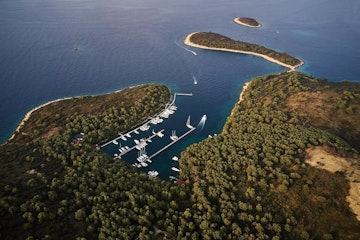
Spanjola Fortress
The Spanjola Fortress, or Spanish Fortress, crowns the skyline of Hvar Town. It's always there, looming like a limpet on a rock above the vibrant marina clubs. The walk up can be a push for the hamstrings, but it's worth it…
You'll be rewarded with jaw-dropping views of the whole harbour and the sylvan tops of the Pakleni Islands just across the strait. There's also plenty of history to get stuck into, since the fort was raised by the Venetians starting sometime in the 1200s, intended as a bastion against Mediterranean pirates and then the Ottoman Turks.
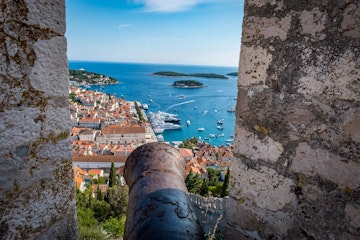
How to Get to Hvar Island (Ferry, Flight & Transfer Options)
The best way to get over to Hvar is on an Island Hopping Tour! Yep, it's not for nothing that this isle is considered the boating mecca of the Dalmatian Islands. There are a few places to moor up. The busiest is Hvar Town, which is the nightlife hub of the isle and sees upwards of 20,000 people per day in the main season. Then there's the smaller Stari Grad and Jelsa a little to the east.
If you don't have your own sails, then don't worry, because there are more ferries linking Hvar to the mainland of Croatia than you can shake an Istrian truffle at! Loads of connections go from the historic city of Split (taking 1h45), while others go from the smaller port of Drvenik (takes just 35 minutes). There are WAY more departures during the summer months from May to September and usually just one or two during the low-season winter months.
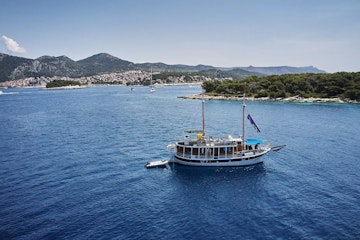
We hope that this Hvar Island guide has tempted you to put the rambunctious party towns and idyllic hinterland of Dalmatia onto your travel itinerary this year. We've got some cracking island-hopping trips in the region – just get in touch for more info.

